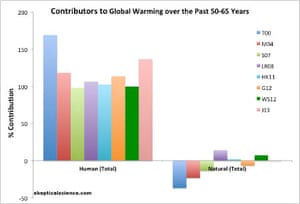Climate scientists
overwhelmingly say that we will face unprecedented warming in the coming decades. Those same scientists, just like you or I,
struggle with the emotions
that are evoked by these facts and dire projections. My children—who
are now 12 and 16—may live in a world warmer than at any time in the
previous
3 million years,
and may face challenges that we are only just beginning to contemplate,
and in many ways may be deprived of the rich, diverse world we grew up
in. How do we relate to – and live – with this sad knowledge?
Across different populations,
psychological researchers have documented a long list of
mental health consequences
of climate change: trauma, shock, stress, anxiety, depression,
complicated grief, strains on social relationships, substance abuse,
sense of hopelessness, fatalism, resignation, loss of autonomy and sense
of control, as well as a loss of personal and occupational identity.
This more-than-personal sadness is what I call the “Great Grief”—a
feeling that rises in us as if from the Earth itself. Perhaps bears and
dolphins, clear-cut forests, fouled rivers, and the acidifying,
plastic-laden oceans bear grief inside them, too, just as we do. Every
piece of climate news increasingly comes with a sense of dread: is it
too late to turn around? The notion that our individual grief and
emotional loss can actually be a reaction to the decline of our air,
water, and ecology rarely appears in conversation or the media. It may
crop up as fears about what kind of world our sons or daughters will
face. But where do we bring it? Some bring it privately to a therapist.
It is as if this topic is not supposed to be publicly discussed.
This Great Grief recently re-surfaced for me upon reading news about
the corals on the brink of death due to warming oceans as well as
overfishing of Patagonian toothfish in plastic laden oceans. Is this a
surging wave of grief arriving from the deep seas, from the ruthlessness
and sadness of the ongoing destruction? Or is it just a personal whim?
As a psychologist I’ve learned not to scoff at such reactions, or
movements in the soul, but to honor them.
A growing body of research has brought evidence from focus groups and
interviews with people affected by droughts, floods, and coastal
erosion. When elicited, participants express deep distress over losses
that climate disruptions are bringing. It is also aggravated by what
they perceive as inadequate and fragmented local, national and global
responses. In a study by researcher Susanne Moser on coastal
communities, one typical participant reports: “And it really sets in,
the reality of what we're trying to hold back here. And it does seem
almost futile, with all the government agencies that get in the way, the
sheer cost of doing something like that – it seems hopeless. And that's
kind of depressing, because I love this area.” In another study by
sociologist Kari Norgaard, one participant living by a river exclaims:
“It’s like, you want to be a proud person and if you draw your identity
from the river and when the river is degraded, that reflects on you.”
Another informant experiencing extended drought explained to professor
Glenn Albrecht’s team that even if “you’ve got a pool there – but you
don’t really want to go outside, it’s really yucky outside, you don’t
want to go out.”
A recent climate survey by the Yale Project on Climate Change
Communication and the George Mason University Center for Climate Change
Communication had this startling statistic: “Most Americans (74%) say
they only ‘rarely’ or ‘never’ discuss global warming with family and
friends, a
number that has grown substantially since 2008 (60%).” Emphasis mine.
These quotes and statistics underscore the reality that many prefer
to avoid or not dwell in—this Mordor-esque land of eco-anxiety, anger,
despair, and depression. One of denial’s essential life-enhancing
functions is to keep us more comfortable by blotting out this inner,
wintry darkness.
The climate survey, however, also has this encouraging finding:
“Americans are nine times more likely to lean toward the view that it is
people’s responsibility to care for the Earth and its resources (62%)
than toward the belief that it is our right to use the Earth and its
resources for our own benefit (7%).”
So, what if instead of continuing to avoid this hurt and grief and
despair, or only blaming them—the corporations, politicians,
agrobusinesses, loggers, or corrupt bureaucrats—for it, we could try to
lean into, and accept such feelings. We could acknowledge them for what
they are rather than dismissing them as wrong, as a personal weakness or
somebody else’s fault. It seems, somehow, important to persist and get
in touch with the despair itself, as it arises from the degradation of
the natural world. As a culture we may uncover some truths hinted at by
feelings we tend to discredit as depressive. These truths include that
they
accurately reflect the state of ecology in our world. More
than half of all animals gone in the last forty years, according to the
Living Planet Index. Most ecosystems are being degraded or used
unsustainably, according to Millennium Assessment Report. We’re living
inside a mass extinction event, says many biologists, but without hardly
consciously noticing.
In order to respond adequately, we may need to mourn these losses. Insufficient mourning keeps us numb or stuck in anger at
them,
which only feeds the cultural polarization. But for this to happen, the
presence of supportive voices and models are needed. It is far harder
to get acceptance of our difficulty and despair, and to mourn without
someone else’s explicit affirmation and empathy.
Contact with the pain of the world, however, does not only bring
grief but can also open the heart to reach out to all things still
living. It holds the potential to break open the psychic numbing. Maybe
there is also community to be found among like-hearted people, among
those who also can admit they’ve been touched by this “Great Grief,”
feeling the Earth’s sorrow, each in their own way. Not just individual
mourning is needed, but a shared process that leads onwards to public
re-engagement in cultural solutions. Working out our own answers as
honestly as we can, as individuals and as communities, is rapidly
becoming
a requirement for psychological health.
To cope with losing our world requires us to descend through the
anger into mourning and sadness, not speedily bypass them to jump onto
the optimism bandwagon or escape into indifference. And with this
deepening, an extended caring and gratitude may open us to what is still
here, and finally, to acting accordingly.


